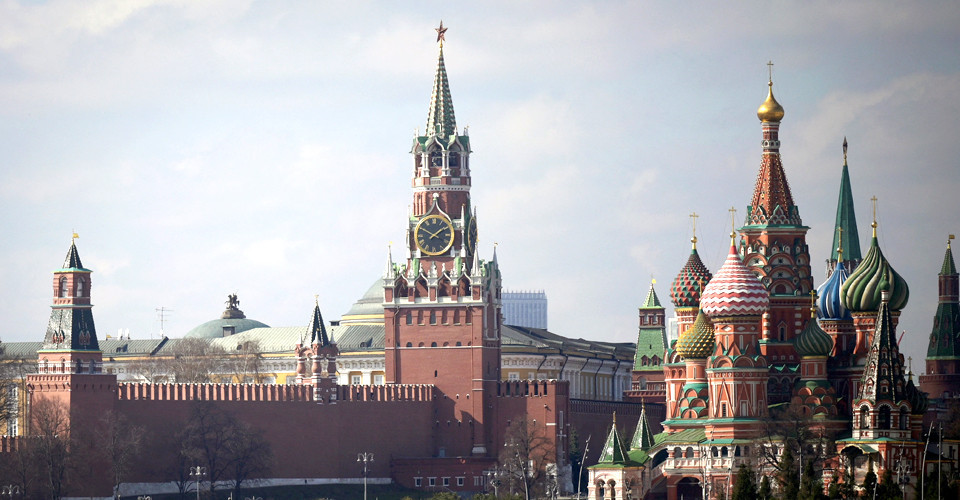
Kremlin was attacked with classic kamikaze drones - Serhiy Zgurets
The Kremlin was considered the most protected object in Russia in terms of air defense and EW means. However, the mass use of long-range kamikaze drones is proving to be quite effective
Drone attack on the Kremlin on May 3
During the night of May 3, the Kremlin was targeted in a drone attack. This incident marks the first assault on the Senate Palace, the primary residence of Russian President Vladimir Putin, in over 80 years. The attack occurred in two waves, with a 16-minute interval between them. It is evident that a portion of the Ukrainian population's aspirations has seemingly materialized. Numerous videos from various angles depicting the explosions have already circulated online. The drones used in the attack were of the classic aircraft-type, characterized by a substantial wingspan.
After maintaining silence for 10 hours, the Russians officially declared the incident a terrorist act orchestrated by the Ukrainian side, with the intention of assassinating Putin. However, Ukraine has not acknowledged any involvement in the attack. Ukrainian authorities have responded, emphasizing that the Kremlin is attempting to escalate tensions prior to May 9. Some experts even believe that the explosions in Moscow were an orchestrated event by Russia itself. The Kremlin had long been regarded as the most heavily defended site in Russia, particularly in terms of air defense and electronic warfare capabilities.
Curiously, other strategic targets in Russia were also struck on the night of May 3. These included the Taman Oil Products Terminal, the largest facility of its kind in the Black Sea region, and the Seshcha military airfield in the Bryansk region, which serves as a base for AN-124 aircraft. It is worth noting that the Taman terminal is situated over 280 km from the current front line, while the Seshcha airfield is 180 km away. Thus, despite the enemy's air defense measures, the extensive utilization of long-range kamikaze drones has proven to be quite effective.

Russia underestimates Ukraine’s military-industrial potential
AFU officer Ihor Lapin argues that Russia has underestimated Ukraine's capabilities in designing and developing modern weapons. Lapin highlights that even Iran, despite being under sanctions, has managed to create UAVs that pose a significant threat to both military and civilian targets. Given Ukraine's scientific and technical potential, Lapin believes that the country has the right to produce and utilize such advanced weapons, including modern kamikaze drones, within the territory of the Russian Federation. This discussion emerged when the first Russian occupiers entered Ukrainian territory. However, Lapin expresses skepticism about Ukrainian involvement in an attack on the Kremlin, as it would lack practicality. He believes that Putin's regime is actively seeking any justification to convince Russians of the importance of their actions in Ukraine. This sentiment is reinforced by the current wave of Russian propaganda outlets and networks advocating for the use of tactical nuclear weapons against Ukraine.
An essential element of a successful counteroffensive is an ample supply of ammunition
AFU officer Ihor Lapin pointed out that prior to any local counteroffensive, active artillery preparation is crucial. Russia has consistently worn us down by depleting our artillery shells at the expense of manpower. The officer stressed that destroying 100,000 enemy personnel would require over 1 million artillery shells. Fortunately, the recent agreements with our partners and the direct reinforcement of the Armed Forces of Ukraine with ammunition are starting to yield results. Lapin highlighted the significance of eliminating the enemy's flank positions to avoid prolonged infantry battles. He observed a shift in the ammunition advantage towards Ukraine in the Bakhmut direction. According to his assessment, the Russians have largely exhausted their reserves in this area, and the recent statements by Prigozhin serve as confirmation of this fact.
The United States has announced a military aid package worth $300 million for Ukraine
Anton Mikhnenko, a military expert on defense and technologies from Defense Express, highlighted that the recent US military aid packages have shown a clear focus on providing ammunition to Ukraine. The United States has supplied Ukraine with ammunition for various types of weapons, including artillery, mortars, and MLRS systems. This strategic decision acknowledges Ukraine's preparation for counteroffensive actions, for which a significant stockpile of ammunition is crucial. Additionally, Mikhnenko noted a notable aspect of the latest aid package, which involves the provision of Hydra 70 unguided missiles to Ukraine. These missiles are already familiar to the Armed Forces, as guided missiles APKWS were transferred earlier in January. Hydra 70 missiles are highly effective weapons, capable of being launched from aircraft with 9 or 7 charges, and they have a range of 8 to 11 km.
Countering Russian Lancet kamikaze drones
Anton Mikhnenko emphasized the need for a comprehensive approach. Firstly, the state should collaborate with defense organizations to direct production capacity towards creating effective means of combating these drones. Secondly, volunteers who possess knowledge about the Russian Lancet drones are also working on developing effective countermeasures. Mikhnenko stressed that while it is possible to counter these drones, it becomes extremely difficult once they have locked onto a target. Therefore, proactive measures are necessary to neutralize them before they identify a specific target.
- News













































